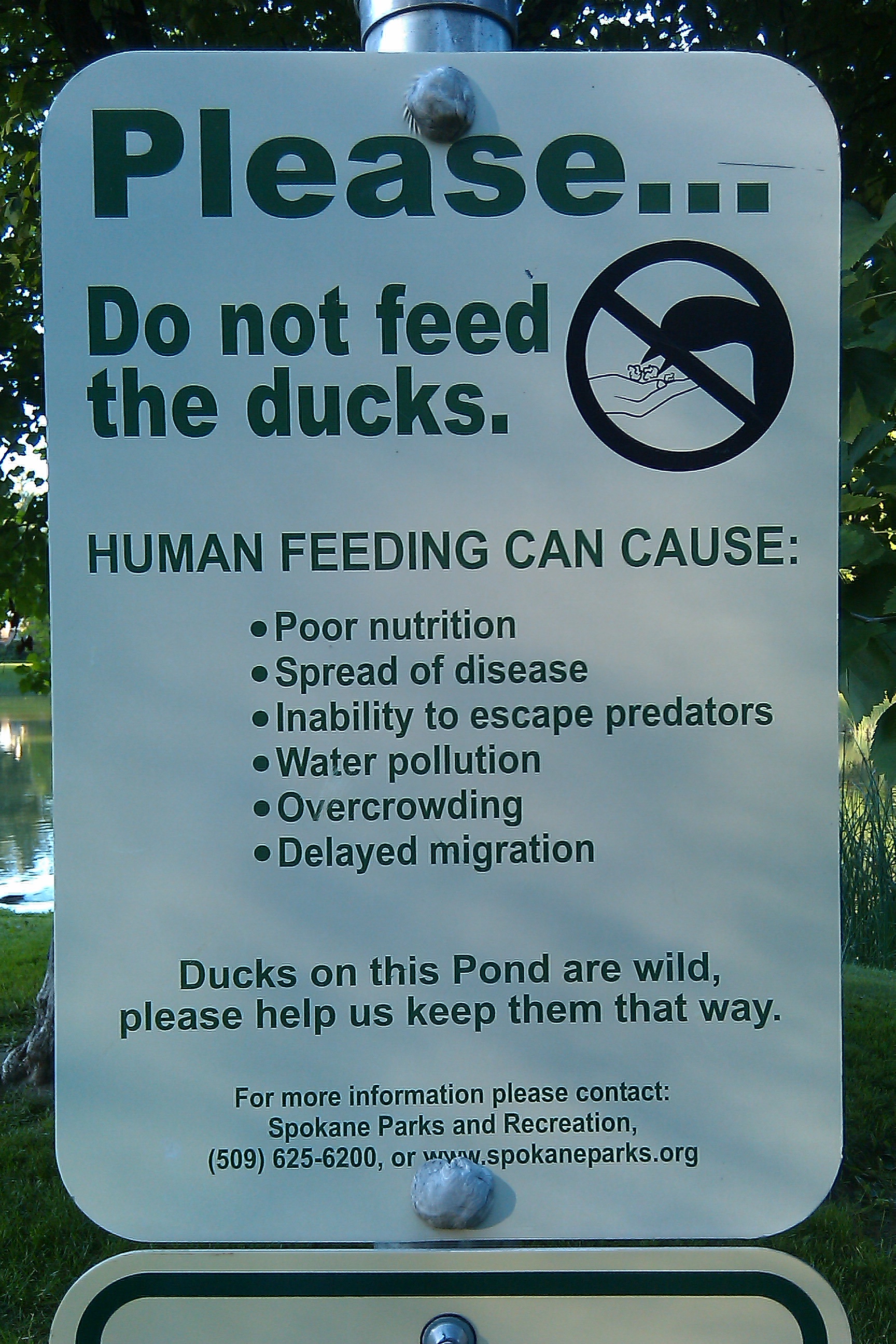So the missus and I were enjoying a picnic in Cannon Hill Park last night when, as I was about to throw a hunk of sourdough bread to a pitiful-looking duck, she pointed to the sign:
I hate to be a grammar snob (really I do), but c’mon. “Human feeding”? The unnecessary—and rather Germanic—capitalization of “pond”? Worst of all is the comma splice, an indicator that the writer in question quit paying attention in English class around the seventh grade or so.
What’s a comma splice? Glad you asked. It’s when two independent clauses are joined by a comma. It’s also called a run-on sentence. (No, a long sentence is not, in and of itself, a run-on sentence.)
Anyway, in this case, “Ducks on this Pond are wild” is the first clause; “please help us keep them that way” is the second. There are three ways to address this. The first is to add a conjunction, like “so” (an inelegant solution at best).
Ducks on this Pond are wild, so please help us keep them that way.
The second is to use a semicolon instead of the comma.
Ducks on this Pond are wild; please help us keep them that way.
Finally, we could just write two sentences.
Ducks on this Pond are wild. Please help us keep them that way.
Here’s a quick test: if the parts of your sentence can stand on their own, don’t make the mistake of using only a comma to separate them.
And hey, Spokane Parks and Recreation? I’m available to proofread on a per-sign basis. Just call AMD corporate headquarters and we’ll have a contract drawn up.


